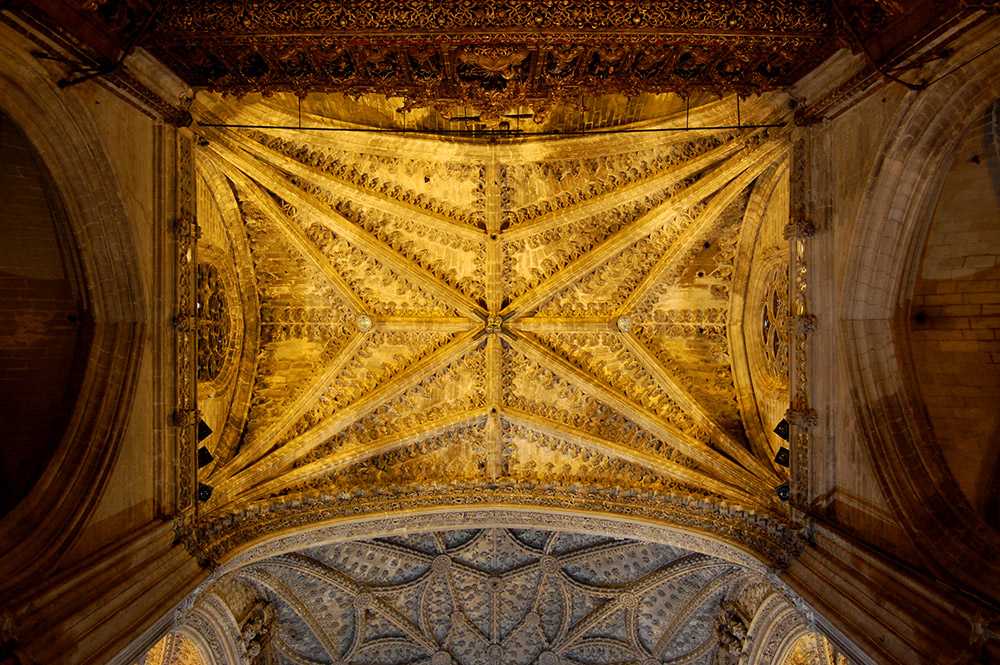
Its History
HISTORICAL CHRONOGRAM
XII
XIII
S. XIV
S. XV
S. XVI
S. XVII
S. XVIII
S. XIX
S. XX
S. XXI
They dreamed, why not, that one day it would be the best Cathedral of the Archbishop of Seville and future Patriarch of the Indies; that the most splendid liturgical worship of the metropolis of Seville would be celebrated in it; That its visitors were astonished to walk under its Gothic vaults, to discover its multiform iconography (painting, sculpture, gold and silver work, fabrics, choral books, stained glass windows), filling the most diverse Gothic and Renaissance chapels, to arrive later to find themselves, in the backwater of the Patio de los Naranjos, with the bibliographical and documentary jewels that are guarded in the Archives and Chapter Library, portico of a singular sancta sanctorum: the Biblioteca Colombina. Stone by stone they see this impressive “hollow mountain” grow, under the stern gaze of the Giralda, lady of Seville.
The Metropolitan Chapter has been its faithful custodian for seven centuries of rich history and wants to continue to be so with a more modern and careful attention and organization every day. To this end, it maintains the daily liturgy of the Hours and the choral Mass, breaks the mold in the celebration of the great festivities of Corpus Christi and the Immaculate Conception (dance of sixes, procession through the city, ringing of its 24 bells), permanently attends to the devotion to the Virgin of the Kings, and carries out extensive sacramental pastoral care, as the first Church of the Diocese of Seville.
But there is more. This wonder must be shared by all, believers or not. To this end, it organizes lecture series, organ concerts in Advent and Lent, permanent exhibitions and, above all, it pays special attention to the cultural visits to all its monuments.
The perfect harmony between pastoral and cultural activities in the cathedral itself has been recognized internationally by UNESCO as an example of current management committed to both facets of the daily life of the Cathedral of Seville.



